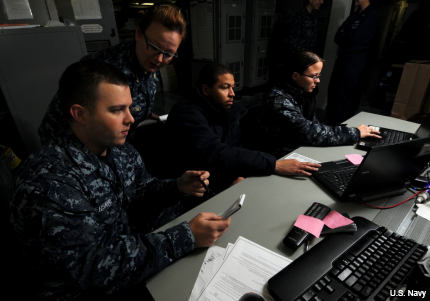Navy forks over $9.1 million for XP support
Deal covers 100,000 computers still running the OS, which Microsoft debuted in 2001 and stopped selling in 2010.

Sailors aboard the aircraft carrier USS George H.W. Bush.
The Navy may have “fully eradicated” Windows XP from the Navy-Marine Corps Intranet, but obviously that doesn’t mean there aren’t still pockets of XP around the service.
And some pretty big pockets at that, as the Space and Naval Warfare Systems Command recently awarded Microsoft a $9.1 million contract to continue the company’s Premier and Custom support services for 100,000 workstations still running XP, Office 2003, Exchange 2003 and Server 2003. The contract is for services through July 12, 2016, but includes options that, if exercised, would continue support until June 2017 and bring the total tab to $30.8 million.
Microsoft quit selling XP in 2010 and ended its regular, free support for XP and the 2003 iterations of Office and Exchange in April 2014, as it encouraged users and organizations to move to newer versions. Support for Server 2003 is due to end July 14. But the company does offer continued support—which includes security and other upgrades—for a price, and XP still has plenty of users.
Earlier this year, Net Applications said XP, the first version of swhich was released August 2001, still accounts for almost 17 percent of desktop operating systems worldwide. Another website analyst, StatCounter, said the number was more like 11 percent. Either way, that covers a lot of computers, including, for example, about 10,000 at the Labor Department, some 35 percent of users at the British National Health Services—and 100,000 workstations in the Navy.
The systems running XP include some "critical command and control systems" at sea and on land, connected to both the unclassified NIPRnet and classified SIPRnet, IDG News Service reported, citing an unclassified document.
The Navy began moving away from XP in 2013 and plans eventually to adopt Windows 10, which is set to be released July 29. In the meantime, it has to provide protections for systems that haven’t been upgraded, hence the deal with Microsoft. On the bright side, $9.1 million for 100,000 computers works out to $91 per machine, which at least costs less than a new OS for each one.




